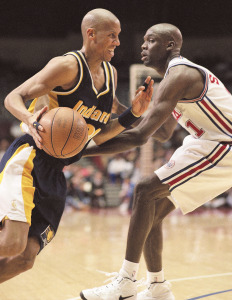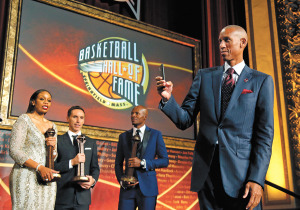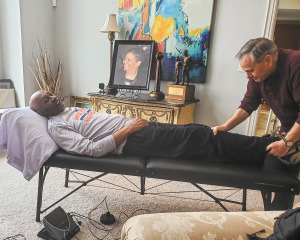
End of an era: Longtime Pacers statistician won’t work games this season
He had filled in the dates for home games on his calendar and had filed his proof of vaccination but was told two weeks ago his services were no longer required.

He had filled in the dates for home games on his calendar and had filed his proof of vaccination but was told two weeks ago his services were no longer required.

But culture, no matter how vague the concept might be, has an influence. Workplace standards and atmosphere always matter.

All these years later, this forgotten chapter in Miller’s fabled career is a reminder of how fragile reputations can be.

Just because Rick Carlisle hasn’t settled into his office in the Indiana Pacers’ practice facility within St. Vincent Center doesn’t mean he hasn’t settled into his role of head coach.

Harkness, who passed away early Tuesday morning at age 81, had a knack for being part of history. He also had a knack for making it himself when necessary.
An attorney for Bose McKinney and Evans LLP, Tarter has initiated business ventures that raise funds for the Dropping Dimes charity, which distributes money to former ABA players in need.

Imagine an 89-year-old basketball floor, used continually—other than a break during World War II—by the host school, Butler University, but also sporadically by high schools, NBA and WNBA franchises, and all-star teams from all levels of the game.

History, though, tends to dash cold reality on any company’s warm-and-fuzzy hires. It’s especially cruel in the NBA, where executives not only have to evaluate a worldwide assortment of young talent but predict their future as well.

The Pacers have the 13th overall selection this year, a middling first-round selection for a team coming off a middling season.

It’s something of a redemption tour for him, although nobody blamed him for how things ended last time. It’s also a break for the man who hired him, Kevin Pritchard, whose last hire survived but one season.

Dr. Richard Bennett’s perfect-attendance mark for the race is a wonder to behold, a feat of devotion likely unmatched by any fan of any sport in any place.

Billy isn’t his real name, but his gambling problem was as real as the loans he was taking out to finance his habit and as real as the weekly Gamblers Anonymous meetings he now attends to ward off the demons.

Boundaries—particularly regarding transfers—that were stifling but also stabilizing are being dismantled piece by piece.

His trademark shout of “Boom Baby” after every made three-pointer became ingrained within the vocabulary of sports fans throughout the state, shouted on driveways, putting greens and anywhere else a long shot of some sort dropped.

Randy Fishman had the best seat in the house for Monday night’s championship, located courtside and smack dab in the middle. Friends watching the game on television would have seen him just above the black line running across midcourt.
He’s not just an IU guy; he’s a state of Indiana guy, an Indianapolis native and a Broad Ripple High School graduate who never lost contact with his homeland.

Capacity was limited to no more than 25% and bands and cheerleaders were noticeably absent. Still, most of the elements that make the NCAA Tournament America’s most beloved sporting event were on display Friday in the games played around central Indiana.
The changes the COVID-19 virus has forced upon the sports world involve not only the way games have been played and attended but also how they’ve been covered by the media.

Whether it’s a need for better health, a better circumstance or simply more opportunity, reclamation projects have found this to be a welcoming city over the years.

More than 50 years after meeting George McGinnis, David Craig is still playing a major role in the rehabilitation process.